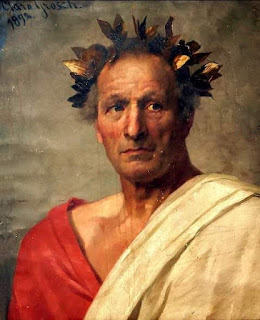ALEXANDRIA THE SECOND CITY OF THE EARLY ROMAN EMPIRE
ALEXANDRIA THE SECOND CITY OF THE EARLY ROMAN EMPIRE.
Alexandria was the second-most important city in the Roman Empire, after Rome itself.
Founded in c. 331 BC by Alexander the Great, Alexandria grew rapidly and became a major centre of Hellenic civilisation, eventually replacing Memphis, in present-day Greater Cairo, as Egypt's capital. During the Hellenistic period, it was home to the Lighthouse of Alexandria, which ranked among the Seven Wonders of the Ancient World, as well as the storied Library of Alexandria.
In 69 BC Cleopatra was born here and would be declared by Caesar along with her brother Ptolemy XIV joint rulers of Egypt and maintained a private affair with Cleopatra that produced a son, Caesarion.
Cleopatra traveled to Rome as a client queen in 46 and 44 BC, where she stayed at Caesar's villa and after his death would return to Alexandria and side with her lover Mark Antony in a campaign against Octavian resulting in her suicide and the loss of Egypt to the Romans in 30BC.
The city would become a centers for Christianity and from Alexandria the old testament had been translated into Greek. By the time of Jesus, the entirety of the Hebrew Scriptures was translated and widely read in Greek.
It became one of the 5 main centres of Christianity in the Christian world called the Pentarchy, after the Greek for five leaders,” referring to the five patriarchates in the early church (Jerusalem, Alexandria, Antioch, Rome and Constantinople).
In 115 AD, large parts of Alexandria were destroyed during the Kitos War (Jewish Roman Wars), which gave Hadrian and his architect, Decriannus, an opportunity to rebuild it.
In 215 AD, the emperor Caracalla visited the city and, because of some insulting satires that the inhabitants had directed at him, abruptly commanded his troops to put to death all youths capable of bearing arms. On 21 July 365 AD, Alexandria was devastated by a tsunami (365 Crete earthquake), an event annually commemorated years later as a "day of horror".
In 619, Alexandria fell to the Sassanid Persians. The city was mostly uninjured by the conquest. Although the Roman emperor Heraclius recovered it in 629, in 641 the Arabs invaded it during the Muslim conquest of Egypt, after a siege that lasted 14 months leading to the Muslim take over of Roman territory of North Africa.
Alexandria is currently the second largest city in Egypt, and the largest city on the Mediterranean coast with 5.23 million people.




.jpg)

.jpeg)






Comments
Post a Comment